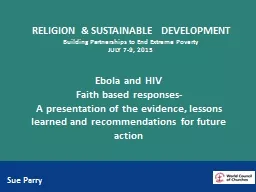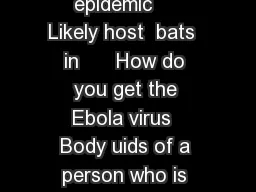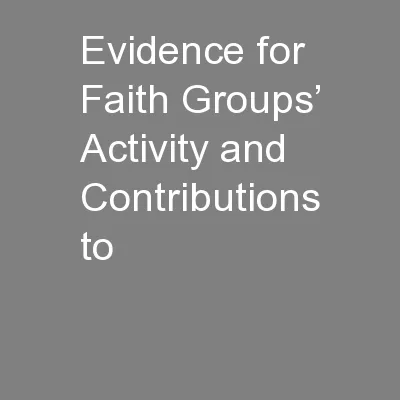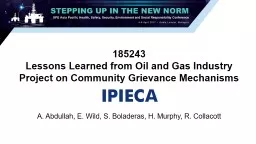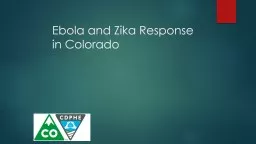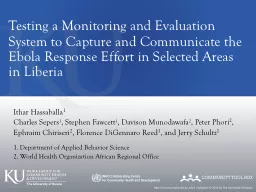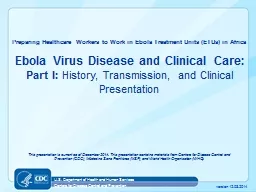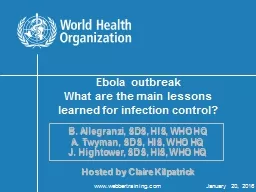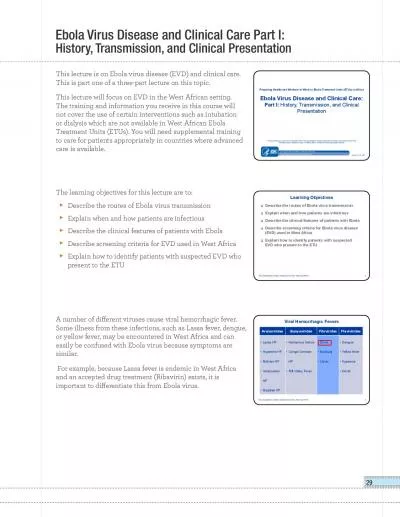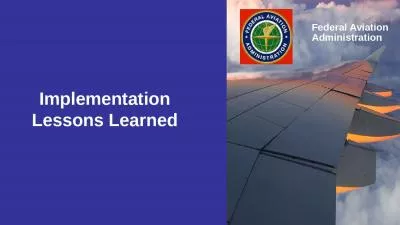PPT-Ebola and HIV Faith based responses- A presentation of the evidence, lessons learned
Author : dshistory | Published Date : 2020-05-04
Pastors and Imams have preached the importance of acceptance and welcomed survivors back into congregationsbrMuslim leaders encouraged survivors back to the mosques
Presentation Embed Code
Download Presentation
Download Presentation The PPT/PDF document "Ebola and HIV Faith based responses- A ..." is the property of its rightful owner. Permission is granted to download and print the materials on this website for personal, non-commercial use only, and to display it on your personal computer provided you do not modify the materials and that you retain all copyright notices contained in the materials. By downloading content from our website, you accept the terms of this agreement.
Ebola and HIV Faith based responses- A presentation of the evidence, lessons learned: Transcript
Download Rules Of Document
"Ebola and HIV Faith based responses- A presentation of the evidence, lessons learned"The content belongs to its owner. You may download and print it for personal use, without modification, and keep all copyright notices. By downloading, you agree to these terms.
Related Documents

